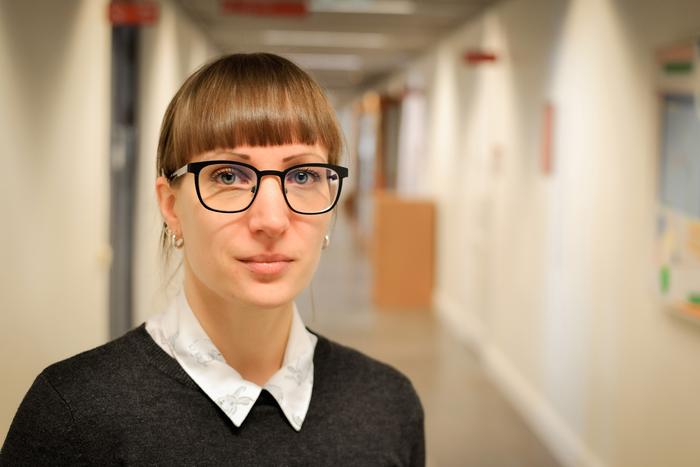Transgender discourse has steadily gained attention in academic and public arenas, yet the complexities of this conversation often lead to polarized opinions. Recent research by Carin Leibring Svedjedal, a scholar at Uppsala University, sheds light on the media’s portrayal of trans-related issues in Sweden. With her doctoral thesis entitled “Being and Doing Transgender: Discourses on Gender and Trans Identities in Transgender People’s Self-Chosen Designations and Swedish Media Reporting 2019–2023,” she critically analyzes the language surrounding transgender identities and the implications of this discourse in shaping public perception.
The media landscape in Sweden has undergone significant changes since 2019, with debates around transgender issues taking on a more alarmist tone. Leibring Svedjedal notes a shift from a more inclusive approach towards traditional and conservative views about gender identity. Her research draws on a survey and interviews with transgender individuals, alongside content analysis of opinion pieces, editorials, and columns published in major Swedish newspapers. The findings suggest that the discourse surrounding trans issues is fraught with tension and fear, often highlighting problematic examples to evoke strong emotions in readers.
Svedjedal discovered two primary perspectives represented in the media: one prioritizing the voices and experiences of transgender people concerning healthcare and legal recognition, and another that raises alarm about potential consequences of increased inclusivity. This latter narrative often surfaces alarmist comparisons with conditions in countries like the United States, where discussions about trans women in women’s prisons have raised significant public concern. Thus, the media’s framing of these issues not only reflects societal fears but also influences the broader conversations surrounding transgender identities.
Through comprehensive interviews and surveys targeting over thirty transgender individuals, Svedjedal interrogates how language plays a critical role in identity formation. Many participants shared that their chosen names differ greatly from their birth names and that their use of pronouns aligns with their gender identity—trans men adopting ‘he,’ trans women embracing ‘she,’ and non-binary individuals opting for ‘hen’ or ‘they.’ This aligns with the broader understanding that personal identification is deeply intertwined with the language individuals use, reflecting their experiences and society’s responses.
Svedjedal highlights the challenges many transgender individuals face when initiating the transition process, including the difficulties their friends and family encounter in adjusting to new names and pronouns. While it is essential to respect and validate these identities, the study reveals that the majority of participants appreciate good intentions. They recognize the complexities of human interaction, especially as those around them learn to accept their unique identities. The author suggests that misunderstanding or accidental misgendering does not necessarily lead to offense, provided the intent behind these actions is rooted in acceptance.
The research offers insight into competing discourses related to transgender identities, identifying a split between how transgender individuals perceive themselves and how society largely views gender. Svedjedal explains that while the transgender community often embraces a narrative that prioritizes mental gender, allowing individuals to define their identities regardless of biological sex, media messaging frequently reverts to a view that privileges biological determinism. This conflicting discourse complicates public understanding and acceptance of transgender identities.
The thesis also discusses how media representation can contribute to fear and misunderstanding. Svedjedal contends that as individuals absorb alarming narratives, they may feel compelled to side with one perspective or another, often driven by emotional responses rather than informed judgments. She urges readers and media consumers alike to adopt a critical lens when engaging with opinion pieces and consider the motives behind the framing of these discussions.
Given the increasingly polarized nature of transgender discourse, Svedjedal calls for a shift towards greater empathy and understanding. In her concluding remarks, she encourages acceptance toward unfamiliar identities and stresses the importance of recognizing that everyone is on a distinct journey. Encouraging those around transgender individuals to adopt a more open-minded approach can foster a warmer and more understanding environment.
Her research highlights an important duality that exists in public and media conversations around trans identities: one that is often critical and fearful, juxtaposed with a community aspiring for recognition and acceptance. By illuminating these narratives, Svedjedal contributes to a growing body of scholarship on gender studies and media analysis that seeks to bridge gaps in understanding between societal perspectives and personal experiences.
As the discourse continues to evolve, the insights from Leibring Svedjedal’s thesis will likely play a significant role in influencing future conversations. The importance of language, intention, and empathy cannot be overstated as society navigates these complex issues. Academic research like Svedjedal’s enables a deeper comprehension of the nuances surrounding transgender identities, ultimately aiming to promote a more inclusive environment for individuals across the gender spectrum.
The examination of language and identity, alongside critical media analysis, underscores the necessity of embracing complexity in discussions of transgender issues. With scholarly endeavors like this, the hope is that both media producers and consumers can engage in healthier dialogues that prioritize understanding over fear, thereby fostering a more inclusive society for all.
Subject of Research: People
Article Title: Being and Doing Transgender: Discourses on Gender and Trans Identities in Transgender People’s Self-Chosen Designations and Swedish Media Reporting 2019–2023
News Publication Date: 7-Mar-2025
Web References:
References:
Image Credits: Henrik Zettergren
Keywords: Transgender identity, Public opinion, Discourse analysis, Social attitudes




